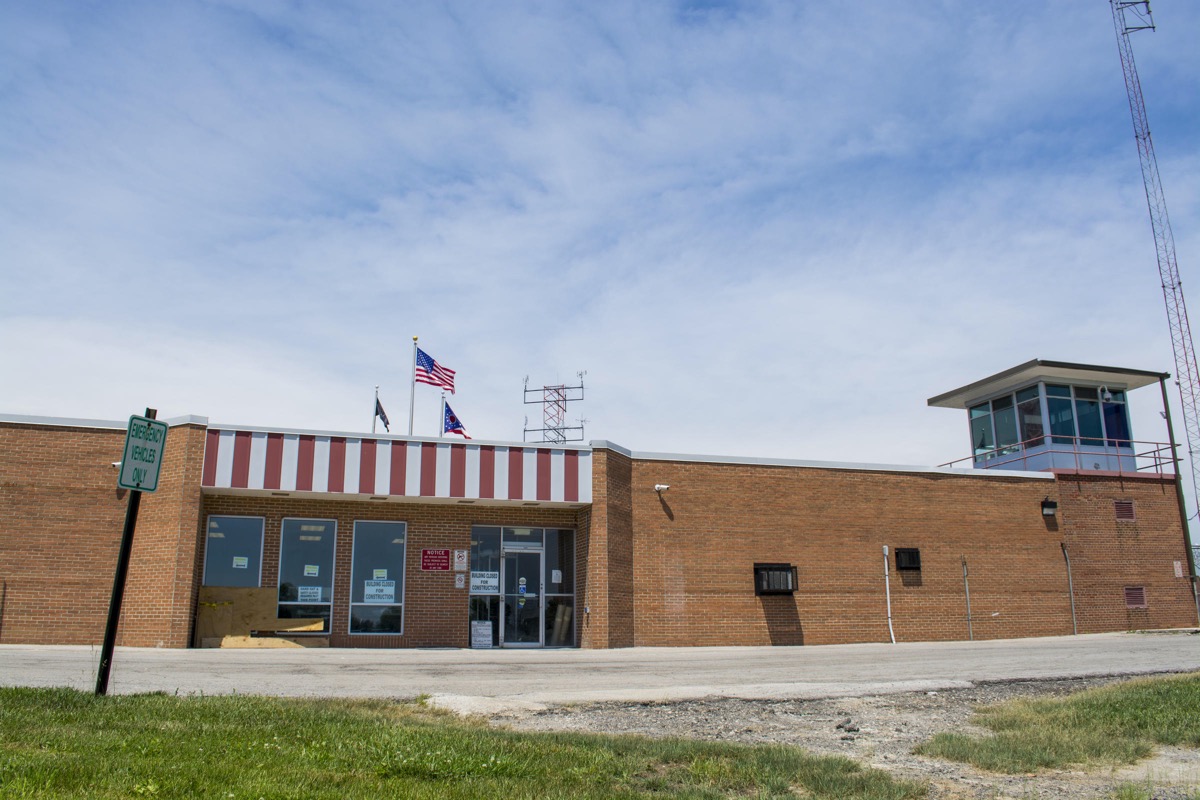A Coronavirus Outbreak Inside An Ohio Correctional Institution
At Marion Correctional Institution in Ohio, coronavirus testing revealed more than 80% of the incarcerated population was contaminated—becoming one of the country’s largest outbreaks.

 This article is part of The State of Science, a series featuring science stories from public radio stations across the United States. This story by Paige Pfleger originally appeared on WOSU in Columbus, Ohio on April 23, 2020.
This article is part of The State of Science, a series featuring science stories from public radio stations across the United States. This story by Paige Pfleger originally appeared on WOSU in Columbus, Ohio on April 23, 2020.
Prisoners can be heard coughing on calls coming out of Marion Correctional Institution, a minimum- and medium-security facility an hour north of Columbus.
Mass testing at Marion Correctional recently revealed more than 80% of the prison population has contracted COVID-19.
Inmate Andre Stores has been incarcerated since 1995 for complicity to aggravated robbery, burglary and kidnapping. He says it’s been days since he and other inmates were tested, and they still don’t know their results.
That has given the virus more time to spread.
“Nobody is saying nothing, they’re just leaving us up here,” Stores says. “It’s like they’re leaving us to basically die. I didn’t come to prison to die.”
There has been a lot of movement inside the prison since testing—some men are being relocated from their dorms to the gymnasium. But inmate Dennis Salerno—who is serving life for aggravated murder—says confusion about who has coronavirus and who does not is making matters worse.
“There were a few guys that were moved out and moved back because they were told that, ‘You’re not on our list,’ or ‘You’re not supposed to be here, you’re positive.'” Salerno says. “But even with whatever it is they do know, they’ve already cross-contaminated people.”
“It’s like they’re leaving us to basically die. I didn’t come to prison to die.”
No other state has reported as many cases of COVID-19 behind bars as Ohio, in large part because no other states have tested as many inmates as Ohio has. As of Thursday, at least 12 Ohio inmates have died from COVID-19, and almost 3,800 have tested positive.
Marion alone boasts 2,011 of those cases, and another 157 cases among staff. Two Marion inmates and one corrections officer have died.
Still, those results only account for a few of the state’s 28 prison facilities. Tens of thousands of Ohio inmates haven’t been tested yet.
Annette Chambers Smith is the head of the Ohio Department of Rehabilitation and Corrections. She says the prisons resorted to mass testing because many inmates were asymptomatic, but the virus was still spreading.
“We felt like we were fighting a ghost,” she says.
She estimates they’ve run at least 5,000 tests. States like Texas, California, Florida and Georgia have larger prison populations than Ohio, but have run significantly fewer tests and are reporting fewer positive results.
“Now there are other states that are considering doing it at this point, but we’re definitely the first one to do it,” she says. “So that’s why the numbers jump out at you.”
Invest in quality science journalism by making a donation to Science Friday.
The prison declined to comment on when inmates would receive their results.
One of many reasons the coronavirus has been difficult to contain in Ohio’s prisons is because they are overcrowded at about 130% capacity. Other states have turned to releasing inmates to help social distancing behind bars. Pennsylvania recommended release of 1,800 prisoners.
In Ohio, Gov. Mike DeWine recommended the release of about 300 inmates in the state prison system, out of a total population of 49,000. Most of those 300 inmates are older or pregnant.
The American Civil Liberties Union of Ohio argues that to accomplish social distancing in prison, significantly more inmates need to be released.
“You need to get your prison facility, or at least each of those individual facilities, down to the point where they could single bunk or single cell,” says Gary Daniels of the Ohio ACLU. “What that number would be in Ohio, I’m not sure, but you might very well be talking about decarcerating our prison population by half.”
Despite overcrowding, Jennifer Clayton, director of health services for the Ohio Department of Rehabilitation and Corrections, says Ohio’s prisons are equipped to handle this situation.
“As a correctional system, we’ve done this for years with seasonal influenza, and tuberculosis and things like that,” Clayton says. “Because of our congregate setting this is something that we know how to do.”
Inmates argue that the near-total spread of the virus inside Marion Correctional is proof that the system did not do enough to protect them from COVID-19. And now that people are sick, they say not enough is being done to take care of them.
Inmate Cory Dodrill is in prison for a rape charge. He says several older men in his dorm were bedridden and did not get medical attention for days.
“They didn’t get any help until either they were hyperventilating, struggling to breathe, or falling out of their rack screaming for help,” Dodrill says. “That’s the only way you get help around here for anything.”
Read and listen to the story on WOSU. Learn about COVID-19 in prisons in our State of Science segment.
Paige Pfleger is a reporter for WOSU in Columbus, Ohio. She’s especially interested in the intersection of public health and criminal justice.